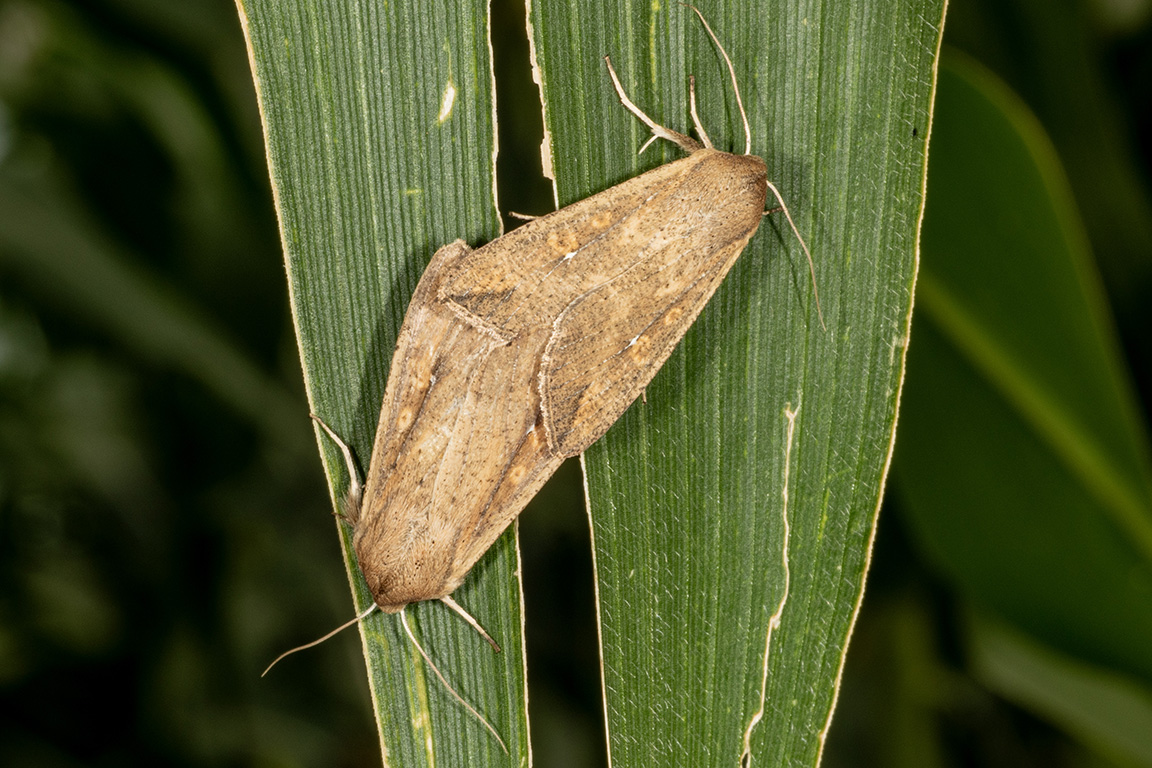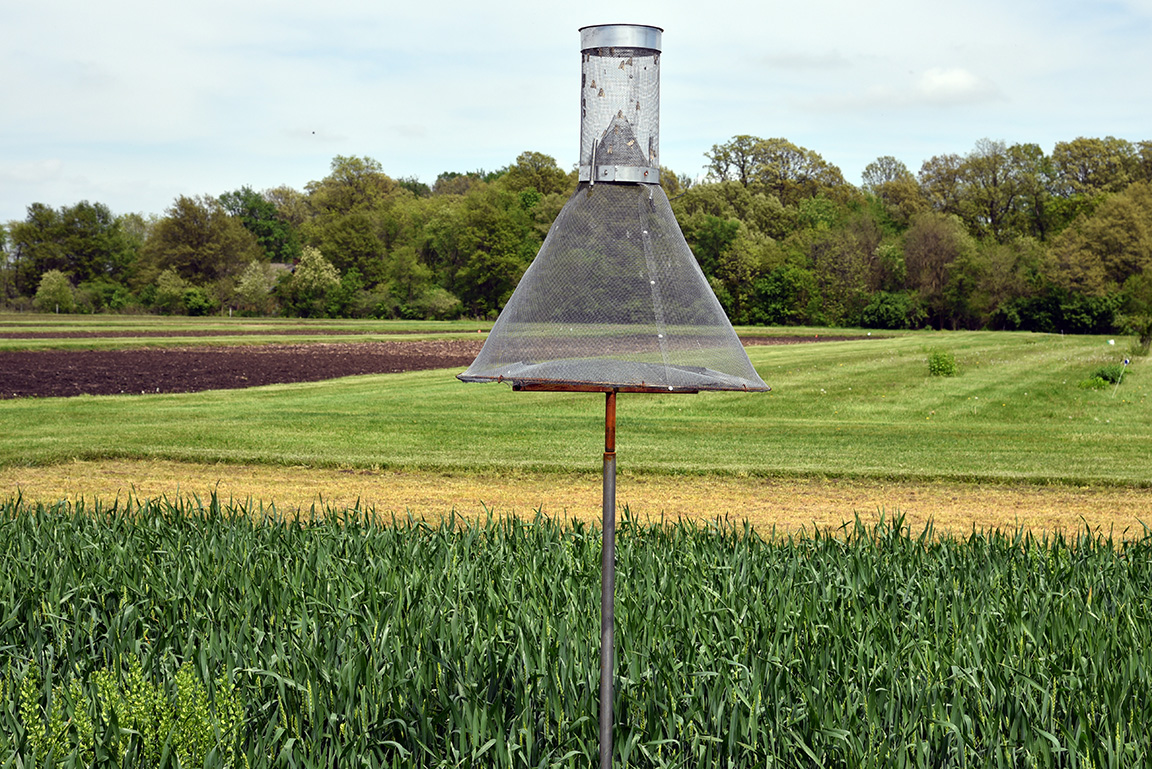Over the past two weeks, armyworm moth captures at the Purdue Ag Research Centers (see accompanying “Armyworm Pheromone Trap Report”) have been variable, certainly not eye-popping! This happens most years, as do localized outbreaks. It is a reminder to conduct timely scouting in high-risk fields when the larvae are actively feeding, this is usually in mid to late May. The increased popularity of cereal rye as a cover crop presents new opportunities for egg-laying females to find attractive food sources, so prioritize fields where cereal rye overlaps with corn.
The armyworm’s preferred hosts for egg laying are grasses. Highest risk crops for egg laying are where dense grassy vegetation, e.g., wheat, grass hay, grass cover crops exist. Ideally, grass cover crops, will be terminated 2-3 weeks before corn emergence to prevent the dreaded “green bridge.” With this spring’s wet and windy weather, spraying of cover crops has been delayed and the 2–3-week window may not be possible.
Of the currently available Bt-traits, only the Vip3A protein provides protection from armyworm feeding extensively on corn. The trade names of hybrids containing the Vip3A protein vary, one can consult their dealers or this online resource, “The Handy Bt Trait Table.” This table, produced by Christina DiFonzo (Ph.D), Field Crops Entomologist at Michigan State University, can be viewed and downloaded HERE.




